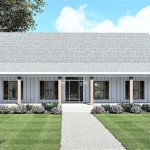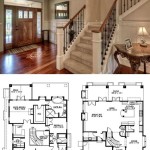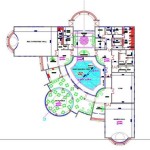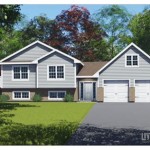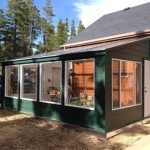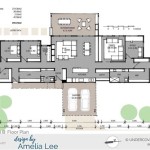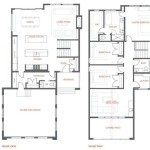Bat House Plans for Missouri: A Guide to Attracting Insectivores
Bat houses, artificial roosts designed to mimic natural bat habitats, are increasingly popular among Missouri residents seeking to control insect populations naturally. Bats consume significant quantities of insects nightly, including mosquitoes, agricultural pests, and moths. Providing appropriate housing can attract these beneficial creatures to residential properties, farms, and parks. Selecting the right bat house plan and location is crucial to ensure bat occupancy and long-term success in attracting and maintaining a healthy bat population.
Missouri's varied landscape supports a diverse range of bat species, each with specific roosting preferences. Commonly found species in Missouri include the little brown bat (though its population has declined due to white-nose syndrome), the big brown bat, the evening bat, and the tri-colored bat. Understanding the roosting requirements of these and other local species is the first step in choosing or designing a suitable bat house. Factors to consider include the size of the bat house, the width of the interior chambers, and the exterior color. Improper designs may not attract bats or could even create unsafe roosting conditions.
Key Considerations for Bat House Design in Missouri
Successful bat house construction starts with a plan tailored to the Missouri climate and the specific bat species one aims to attract. Several key features significantly impact a bat house's attractiveness and usability. These features include size, chamber width, material, and ventilation. Careful attention to detail during the design and construction phases will increase the likelihood of bat occupancy.
Size and Chamber Dimensions: The size of the bat house directly correlates with the number of bats it can accommodate. Bat houses are typically categorized as single-chamber, multi-chamber, or rocket-style houses. Single-chamber houses are generally smaller and suitable for smaller colonies, while multi-chamber houses offer more space and can accommodate larger groups. Rocket-style houses are tall and cylindrical, providing varying temperature gradients which are beneficial for bats. Chamber width is critical; bats prefer narrow crevices that provide security and warmth. A chamber width of approximately ¾ to 1 inch is generally recommended. Too wide a chamber may make bats feel exposed, while too narrow a chamber can hinder movement and roosting.
Material Selection: The material used for bat house construction influences its heat retention and durability. Untreated rough-sawn lumber, preferably cedar or pine, is a standard choice due to its affordability, availability, and natural texture which provides bats with a surface to grip. Pressure-treated lumber is not recommended as it can contain chemicals that may be harmful to bats. The wood should be at least ½ inch thick to provide adequate insulation. The exterior of the bat house, particularly in Missouri's climate, should be stained dark brown or black to absorb solar heat, creating a warmer roosting environment. It is imperative to use water-based stains or paints that are low in volatile organic compounds (VOCs) to avoid harming the bats. Avoid using paints or stains on the interior surfaces, as the texture of the bare wood is crucial for the bats to cling to.
Ventilation and Drainage: Proper ventilation is essential to prevent overheating in the summer, a common problem in bat houses. Small ventilation slots or gaps located near the top of the bat house allow for airflow and help maintain a more stable temperature. However, these vents should be designed to prevent rain from entering the roosting chambers. Drainage holes at the bottom of the bat house are also crucial to eliminate moisture buildup, preventing fungal growth and ensuring a dry roosting environment. Adequate drainage contributes to the overall health and longevity of the bat house, making it a more attractive and sustainable option for bats.
Roof Design: The roof of the bat house should extend over the front of the house to provide protection from rain and sun. An overhanging roof is a simple and effective way to shield the entrance from the elements, making the roost more attractive to bats. The roof angle should allow for efficient water runoff to prevent pooling, which can lead to rot and deterioration of the wood. Proper roof design contributes significantly to the overall durability and weather resistance of the bat house.
Placement and Orientation for Optimal Bat Attraction
Even the best-designed bat house will fail to attract bats if placed in an unsuitable location. Careful consideration of the site's sun exposure, proximity to water sources, and surrounding habitat is essential for successful bat house placement. Proper orientation can also significantly impact the internal temperature of the bat house, making it more or less attractive to bats depending on the season.
Sun Exposure: Bats prefer warm roosting environments, so locating the bat house in an area that receives ample sunlight is critical, particularly in cooler climates or higher elevations. A south- or east-facing orientation, which offers at least six to eight hours of direct sunlight per day, is generally recommended in Missouri. This exposure allows the bat house to warm up quickly in the morning and maintain a suitable temperature throughout the day. Avoid placing the bat house in shaded areas under trees, as this could hinder its ability to trap heat and attract bats. The ideal location will balance direct sunlight with some degree of protection from extreme weather conditions.
Proximity to Water and Habitat: Bats require access to a reliable water source for drinking and insect foraging. Placing the bat house within ¼ mile of a stream, pond, lake, or other water body improves the likelihood of attracting bats. Additionally, bats prefer habitats with ample vegetation, such as forests, fields, or gardens, which provide foraging opportunities. A diverse landscape with both open areas and wooded areas is ideal. Avoid placing the bat house in areas with significant light pollution, as artificial lights can deter bats. Maintaining a natural landscape surrounding the bat house will create a more attractive environment for the local bat population.
Mounting Height and Structure: Bat houses should be mounted at least 12 to 20 feet above the ground to protect bats from predators and provide a clear flight path. Mounting the bat house on a pole or building offers greater stability and security than mounting it on a tree. Trees provide potential perches for predators such as snakes and birds, which can make the bat house less appealing. A sturdy pole mount, treated to prevent rot, or a secure attachment to a building wall is recommended. Ensure that the mounting structure is stable and can withstand strong winds and weather conditions.
Avoid Obstructions: The area in front of the bat house should be free of obstructions, such as branches or wires, to allow bats to easily enter and exit the roost. Bats require a clear flight path to maneuver effectively. Pruning nearby vegetation can improve accessibility and make the bat house more attractive. Maintaining a clear approach to the bat house will enhance its functionality and increase the chance of bat occupancy.
Maintenance and Monitoring of Bat Houses
Once the bat house is installed, ongoing maintenance and monitoring are necessary to ensure its continued success. Regular inspections can identify any issues, such as structural damage or pest infestations, that may deter bats. Cleaning the bat house periodically can also help maintain a healthy roosting environment.
Regular Inspections: Inspect the bat house at least once a year for any signs of damage, such as cracks, loose boards, or water damage. Address any structural issues promptly to prevent further deterioration. Check for signs of pests, such as wasps or birds, which may compete with bats for roosting space. Removing any nests or intruders will improve the bat house's attractiveness to bats. Regular inspections will ensure the bat house remains in good condition and continues to provide a suitable roosting environment.
Cleaning the Bat House: Over time, bat droppings (guano) can accumulate in the bat house, potentially leading to unpleasant odors and unsanitary conditions. Cleaning the bat house every few years can help maintain a healthy roosting environment. The best time to clean a bat house is in late winter or early spring, before bats return from their winter roosts. Wear protective gear, such as gloves and a mask, when handling guano, as it can contain histoplasmosis spores. Remove the guano with a scraper or brush, and dispose of it properly. Cleaning the bat house will reduce the risk of disease and maintain a more appealing roosting environment for bats.
Monitoring Bat Activity: Observe the bat house regularly in the evening to monitor bat activity. Look for bats emerging from the house around dusk. Counting the number of bats emerging can provide an estimate of the colony size. Note any changes in bat activity, such as a decrease in numbers or a sudden abandonment of the roost. If problems arise, consult with local wildlife experts or bat conservation organizations for guidance. Monitoring bat activity will provide valuable information about the success of the bat house and help identify any necessary adjustments.
Providing a Water Source: During dry periods, providing a supplemental water source near the bat house can be beneficial. A small birdbath or shallow dish filled with water can help bats stay hydrated. Ensure that the water source is clean and accessible. Providing a water source can be particularly helpful in urban areas where natural water sources are limited.
By following these guidelines for design, placement, and maintenance, Missouri residents can create successful bat houses that contribute to bat conservation and provide natural insect control. Remember to research the specific needs of local bat species and adapt plans accordingly for best results.

Make Room For Batty Missouri Department Of Conservation

Bats Of Missouri Information For Homeowners Mu Extension

Bats Of Missouri Information For Homeowners Mu Extension

Make Room For Batty Missouri Department Of Conservation

Matt Fajkus Architecture S Bat House Visitor Center Provides Vital Nesting Grounds For Bats

How To Buy Build Or Maintain A Bat House Tnc

Double Chamber Bat House Lonestarwoodcraft Com

Single Chamber Bat House Lonestarwoodcraft Com

Building A Bat House Virginia Wildlife Removal

How To Build A Bat House

